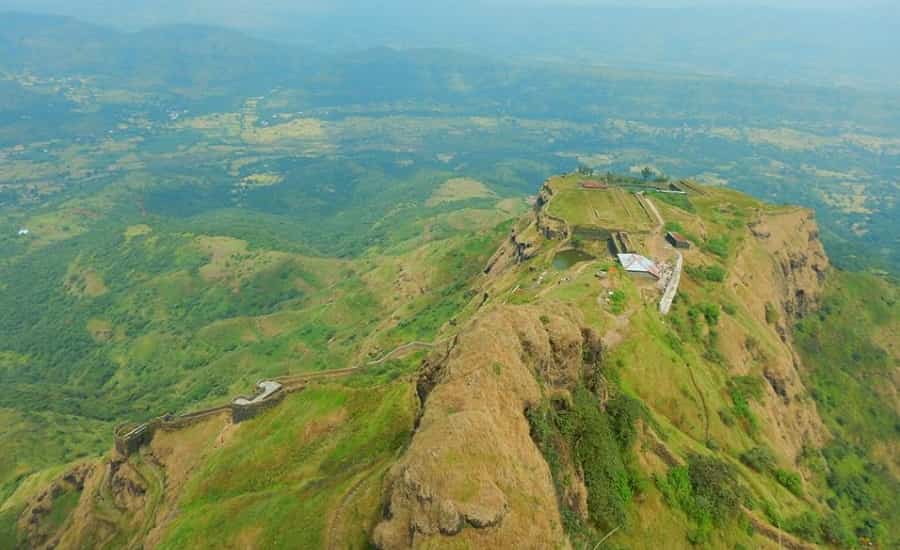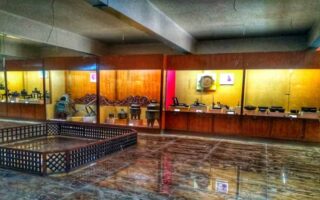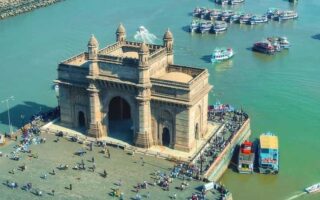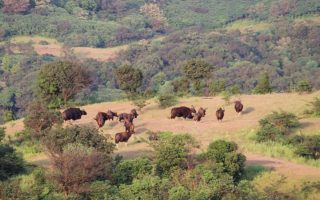Forts are found in almost every part of the world. Inside these forts, a large number of people used to reside and also conduct their business, community events and other activities. The forts also served as the military bastions and were the venue for many epic battles fought in the history of mankind. The Rajgad Fort or the Royal Fort in Maharashtra is one such place that served many purposes before becoming a much sought after tourist destination.

Rajgad Location
The Rajgad Fort is situated in the Pune district of Maharashtra and is around 65 km away from the south-west part of the modern city of the state, Pune an around 15 km ahead of the Nasrapur Village amidst the Sahyadri Ranges. The fort has been spread over a large area of 40 km in base and is nestled at an elevation of almost 1376 meters above the sea level.
History
Apart from serving as the residence of Shivaji Maharaj for twenty five years, this fort has seen a lot of events for the period it was occupied by one ruler or another. Rajaram Chhatrapati, son of Shivaji Maharaj, was born here. Saibai, queen of the Maratha Empire and wife of Shivaji, died here. The fort was captured by Ahmed BahiriNizamshah in the late fourteenth century. During the early sixteenth century, the fort was attacked and captured by Adilshah. The ownership of the fort went back to the rulers of Nizamshahi Dynasty and became a part of ShahajiRaje’s legacy in 1842.
Five years later, in 1647, Shivaji Maharaj attacked and captured the fort. He conducted repair works in 1649 and renamed the fort as Rajgad in 1654. Shivaji left the fort to attack the north of Konkan area, from where he returned victorious in 1658. A year later, he again left for Pratapgad to fight against Afzal Khan. In the same year, his wife Saibai breathed her last inside the fort.
In 1660, SiddiJauhar attacked the fort and tried to arrest Shivaji Maharaj, but Shivaji managed to flee to Vishalgad. The construction of new buildings near the fort was completed in 1662 and Shivaji returned to the fort after capturing the region of Kalyan and Penn. In 1663, after the raid of Shaista Khan, Shivaji Maharaj left for Kondana from where he returned back to the fort. In the following year, the booty captured after the attack on Surat.
The Mughals tried to capture the fort in 1665, but Shivaji Maharaj accepted the defeat after the attack of Jai Singh. In 1670, Shivaji’s son Rajaram was born while one of his most trusted accomplices, TanajiMalusare lost his life defending the fort. Another phase of repairing was initiated in 1671. The fort was attacked and captured by the Mughals after the assassination of Sambhaji Maharaj in 1689. Three years later, the fort was captured by Shankarji Narayan, and it became the capital of Rajaram Maharaj in 1697. In 1818, the ownership of the fort was transferred to the British Empire.
What to See
The fort itself is a treat for the eyes of the visitors, and the structures built around the fort are also worth looking and exploring. At the north end of the fort is Padmavati Machee, where there is a temple and a lake by the same name. There is a ChorDarwaza, GunjavaneDarwaza and PaliDarwaza. A storage facility of arms and ammunitions called the DaruKothar was also built here. An office, a Diwankhana and a Rajwada can still be found here. A lake called Ghod Tale was built exclusively to feed water to the horses. The tomb of Saibai is also built here.
At the south east of the fort is SuvelaMachee. This Machee is equipped with a lot of doorways and secret routes which helped the rulers and soldiers to flee in case they could not face the enemies. There is an escape door attached to the bastion known as the KaleswariBuruz. The SanjeevaniMachee, located at the southwest of the fort, is another fortified section. The center of the fort is called Bale Killa, where you can find palaces and water reservoirs that are now in ruins. The entrance door to this portion of the fort is called the MahaDarwaza. A lot of caves are also found in this center.
Rajgad is now one of the most famous trekking destinations in the district of Pune. One can plan this visit at any time of the year in order to explore the vastness and beauty of this fort and the hills that surround it. From the top of the fort, you will be able to locate Sinhagad on the north, Torna Fort on the west, Lingana fort, and Raigad in the Konkan district. Towards the east of Rajgad is the Purandar and Vajragad fort.
Eat, Drink, Collect
The local people cook and serve local delicacies at the fort. While a bit pricey, the quality and taste of this food are unmatched. The water from the reservoirs can be consumed. Before you head for the fort, you can order the locals to carry your luggage up and also serve food and beverages at a specific time. Tourists can stay and rest at the Padmavati temple, which can accommodate around fifty people at a time. You can also erect a tent and watch the sky glowing at night.
Best Time to Visit
Although the fort is open all year long, you should try to visit it after monsoons, as the weather after the rains adds to the beauty of the hilly areas and the greenery keeps you motivated and energized as you trek all the way to the fort.
The trek is tiring, but is rewarding as well. The view from the top of the fort and the greenery that will accompany you throughout the trek are not something that you come across every day.
How to Reach
The closest city to the Rajgad fort is Pune. It is well connected with rail and road to most parts of the state and country and is also accessible through air transport. The international airport in Pune connects it to several other countries, thus making it easier for trekking and travel enthusiasts to fly down to Pune and move further towards Rajgad. From Pune, you need to head towards nasrapurand reach the Gunjavane village at the foothill of Rajgad.
- You may also like to read about: Popular Forts of Maharashtra


